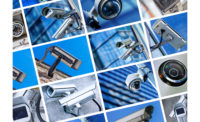The role of the monitoring center operator has experienced several incarnations. What was once a job of fielding a signal and dispatching police has evolved into a much more time-intensive role of gathering information and making informed decisions, not only about security events, but about facilities management and business operations events.
The entry of video analytics into the marketplace has and will continue to transform the day-to-day operations of the monitoring center. One of the ways monitoring centers are capitalizing on available technology and using the data of today’s systems to their advantage is to visually verify an alarm event. But central stations are able to use today’s video analytics for more than simply visual verification; monitoring centers are finding ways to better serve their customers and reduce attrition while monetizing the potential of analytics to offer end users customized applications to meet their needs. The challenge becomes implementing those analytics in a way that allows the monitoring business to maintain its margins and offer the best possible customer service.
“Analytics are becoming more intelligent and sophisticated, which in turn opens ever more application use. ... The future of monitoring is certainly with video content analytics,” says James Holland, director of proactive video monitoring, National Monitoring Center, Lake Forest, Calif.
Though customers with monitored video analytics are a minority at most central stations using the technology, the use is steadily increasing and those in the industry agree that analytics have a big future in the role of security. Today, the majority of video analytics applications are used for intrusion detection, objection detection or tracking, and loitering detection.
“One of the most commonly used analytics is an object entering a field. You might use this in perimeter detection, let’s say a supply yard,” says Chris Larcinese, vertical marketing manager, Bosch Security and Safety Systems, Farmington Hills, Mich. Once an object has been detected and defined, if appropriate, an operator would field the event and determine the action based on a predefined plan.
Most Popular Monitored Analytics Applications:
- Loitering detection
- Intrusion detection
- Abandoned object/missing object detection or object tracking
- People counting
- Situational monitoring
- Heat detection
- Smoke detection
“There are many analytics out there right now but for the most part they are looking for similar things, such as looking for cars or people going one way but not another; a vehicle or human going into a particular field of view; or loitering,” shares Morgan Hertel, vice president of technology and innovation at Rapid Response Monitoring, Syracuse, N.Y. “Let’s take a school, for example. Someone walking by may be OK but if they stop and hang out it becomes an event. In another application, it may be fine to have one person in the field of view but when there are five people, that’s not OK. You may watch for objects coming in and out of a scene that shouldn’t be there, like a briefcase staying by itself or a statue that should be there at all times and is missing.”
Hertel says in some cases monitoring centers use synergistic technologies working together with analytics. For instance, a car lot may not mind people walking by, but it doesn’t want loiterers. “The analytic may pick up loitering and then the operator may open up two-way audio to speak to the person. That would be a typical application. In other instances, we may need to turn on lights or take other action based on the event,” he says.
Because monitoring video analytics is highly customized, many monitoring businesses are seeing doors open up for non-security applications, such as people counting or analyzing behavior. “There is much, much more than loss prevention, which is quite exciting,” Larcinese says. He says that smart parking systems, traffic management and retail marketing applications (such as looking at how customers enter a store, which way they turn, and how long they look at a display) are a few examples of value-adds he sees with video analytics systems.
Monitoring Challenges
Employing analytics for security events can aid monitoring centers in providing visual verification of an event, reduce the noise or nuisance signals coming into the central station, allow an operator to proactively monitor an account before a potential event occurs, and give an operator a higher quality alarm (for example, more information about a potential event). Today’s analytics are not as simple as plugging in a camera and gaining full situational awareness, however.
Brent Boekestein, CEO of Vintra, San Jose, Calif., says that getting actionable data requires three things: determining the appropriate solution and what kind of data is needed; having a cure period, which allows for fine-tuning and threshold sensitivities for the analytics; and helping customers with realistic expectations for what their camera systems can do.
Boekestein says that there are consequences from inappropriate analytics or unusable data for the central station. “There is an increased cost because you are spending more time dealing with false positives and an ... increased human-led investigation time. It impacts the ability to deliver cost-effective monitoring and timely reports. There is also a potential increase in risk for your customers, because if you have a solution that misses key attributes they want or secondarily creates so many false positives that you end up shutting the analytics off,” then that creates a problem, Boekestein explains.
At a panel discussion at ISC West this past April, Rush McCloy, owner of Eyewitness Surveillance, Hanover, Md. said that monitoring centers can anticipate a higher volume of unwanted alarms at the beginning of a new project, even more so for less sophisticated analytics.
“You have to understand the difference between a false video alarm and an unwanted alarm and how that affects a central station from a cost and operations standpoint,” McCloy says. Unwanted alarms are the alarms you don’t want, he adds. “This is the noise that happens that would never be actionable. They blow up your system. False alarms do require interpretation — they’re not necessarily unwanted. They are worthy of consideration, but they are false.”
McCloy says that in the beginning of deploying analytics, unwanted alarms may take up a lot of time. “Those really crowd your margins with both the wallet cost and the quality cost. They are your most expensive alarms in the beginning, but the good thing is by using more sophisticated analytics, you can get rid of those with time, which you can’t do with false alarms.”
Brandon Niles, director of operations at Acadian Monitoring Services, Lafayette, La., adds that both changes in customer needs and changes in the physical environment in which the video system is deployed can raise alarms in the monitoring center. “We have an expectation that there will be false alarms and site changes. For us, a false alarm becomes unwanted when it is not fixed and it kills your margins,” Niles says.
It’s important to be up front with the customer about expectations and the trajectory of calibrating and using the analytics, McCloy shares.
Indeed, say industry insiders, trouble can arise when there is not a tight dialogue between the monitoring center, the integrator and the end user. “What we have seen happen before is that first you have a salesperson make a sale and then the integrator comes in. After all this, the first person to look at the actual alarms coming in is the operator. If that’s the first time the monitoring center is involved, there will be a lot of false alarms,” says Andreas Pettersson, CEO of Arcules, Irvine, Calif. “It has got to be a proactive approach, setting realistic expectations and working together from the beginning. There won’t be a good experience if the [monitoring center] doesn’t get involved until the tail end of the process.”
Top Challenges With Using Analytics in a Central Station
- Getting actionable data
- Understanding there is a test and tweak period
- Pricing — analytics are customized for the application and each application requires a different amount of time and operator involvement
- Training — operator training is more specialized than traditional motion and sensor-based intrusion alarms
Because getting the analytics right before and during installation is the first step in meeting customer expectations and giving monitoring centers the initial tools they require to meet those expectations, many experts in the industry say including the monitoring center in the discussion and design of a video system from the beginning is a must.
“First, it’s very important on a new project to clearly understand and document the desired outcome when using video analytics. Another thing is to choose the best camera type and sometimes the cheapest camera won’t be sufficient,” says Craig Jeffries, president and CEO, Jemez Technology, Los Alamos, N.M. “Sometimes [it] requires a higher upfront cost, but over time there can be better ROI, less service, and [a more productive] operations center.”
Jeffries adds that monitoring center staff see things about the end user’s environment that the end user doesn’t see. Therefore, explaining how the process works and how the process can be optimized is very important.
For this reason, NVMC Solutions, Atlanta, started a dealer affiliate program to facilitate working on video analytics projects from the start. “Most dealers think about where does this customer want a camera and will it give them the clarity they are looking for? For us, the design process is focused on the mission. The customer may want to see the inside of their store, but we may need to see the front and outside, so getting involved in the design phase to make sure we can collect the appropriate data to accomplish their mission is important,” says Markus Scott, CEO of NVMC Solutions. Scott says that getting involved after the fact may cost the integrator and end user more down the road because they have to change something they hadn’t done from the beginning.
Considering the Particulars
Getting involved in the design process is an important step to solidify a good relationship between the end user, integrator and monitoring center. During that process, it’s also important to discuss the back end of the video system, including who will handle updates and troubleshoot issues.
“One of the important things is to be able to manage the analytics remotely; being able to log in and make changes is important,” says Chris Brown, vice president, central stations and guard force division, SureView Systems, Tampa, Fla. “It’s very important to consider how you want to manage that piece. Do you want to own that set up or do you want the dealer to own and manage the set up? Who will handle defining the analytic as proper and then who will be responsible for the result?” Brown says.
“It’s not absolute, but from my experience, the most successful monitoring partners have some kind of agreement to access the network at the site,” says AJ Frazer, vice president of business development, cloud services at Agent Vi, which has worldwide headquarters in Israel and multiple locations in the U.S. “When only the dealer has access, it tends to be more complicated because if there is an issue with the analytics coming into the monitoring center, the dealer does not see it and often isn’t available to troubleshoot. The most successful arrangements are where the monitoring center is allowed access and everybody is happier on those accounts.”
In addition, getting involved in the systems discussion is sometimes critical in educating all parties involved on what certain video analytics can and cannot accomplish. “Monitoring companies have to push and promote a business model with higher upfront costs for the best analytics and that’s a challenge,” Frazer says. “[Customers and dealers] need to understand that to be successful from day one, you’ve got to invest in the right solution upfront when the project is being capitalized, because after the fact, no one is willing to pay for a better solution.”
Another challenge for monitoring centers is pricing, because the analytics still require a human to manage the course of action after an event occurs, and that amount of time can vary widely depending on the scenario. “We may know our exact metrics for traditional burglar alarms. With video it changes because it’s going to take more time and time is money. Ten years ago it was a one size fits all X per month, but nobody can do that anymore,” says Hertel of Rapid Response Monitoring.
From operator training to higher upfront costs to customized systems (and pricing), the business model of monitoring with video analytics is inherently different from models of the past. With video analytics continuing to improve and incorporate bigger data into their abilities, the changes will continue and monitoring centers will be poised to offer more services than ever before.
Scott of NVMC says that success in this arena requires integrators and monitoring centers to stay focused on the end user’s mission. “It’s a very different business model than most central stations are accustomed to. With high-end analytics and customized analytics, we touch our customers every single night, multiple times. There is a human element with it that is a bigger cost than what central stations are used to,” he says.
“The analytics drive more than security; we are looking to capture that data and get into the minds of our customers and find out what is important to them,” Scott says. “That really has to be done with a lot of help and partnership of [everyone involved].”
More Online
For more information on video analytics, visit SDM’s website where you’ll find following articles:
“Artificial Intelligence in Video Surveillance”
www.SDMmag.com/AI-video-surveillance
“State of the Market: Video Surveillance”
www.SDMmag.com/state-of-the-market-video-2019
“Video Walls and Their Importance in Monitoring Centers”












